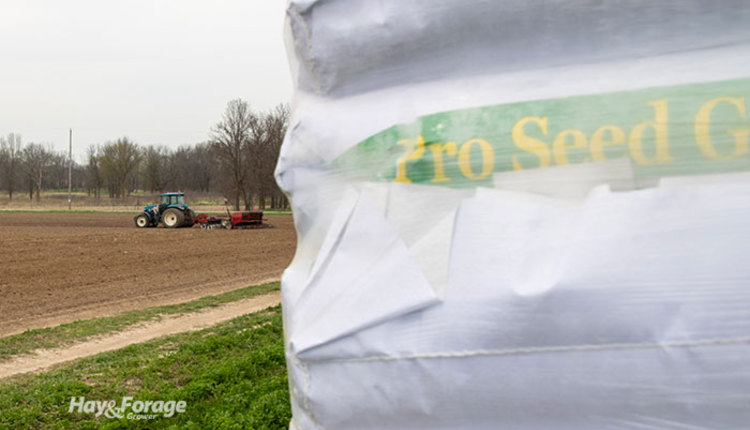
Water bodies not subject to external forces remain calm and level. This is true of a lake or mud puddle; however, when impacted by forces such as wind, the normally quiescent waters become rough, perhaps even dangerous to navigate.
As with water, it’s rare that most things in life remain calm because external forces are always at work. It’s the nature of change.
During the past several years, the alfalfa seed industry has been subject to a flurry of external forces, which has been cause for some rough waters. Farmers purchasing alfalfa seed today find themselves in a much different environment than what was the case 20 years ago. The same can be said for companies breeding and/or marketing alfalfa seed.
For a period of time, consolidation of companies and brands was occurring at a rapid-fire pace. This paralleled a reduction in alfalfa acres being seeded in the U.S. Next, some alfalfa brands such as DeKalb (Bayer) were simply left in the historical dust. S&W Seeds remains in the alfalfa game but they are not advancing any new dormant genetics at this time; however, they still advance nondormant varieties for the international market.
More recently, Corteva got out of the alfalfa game altogether, selling its Pioneer, Dairyland Seed, and Alforex brands to DLF USA. The Pioneer and Dairyland alfalfa brand names will soon no longer exist; it sounds like the Alforex brand will remain.
All of this change now leaves us with three active private alfalfa breeding programs in the U.S.: Forage Genetics, Legacy Seeds, and the previously mentioned DLF. Essentially, all of the alfalfa seed purchased after next year in the U.S. will come out of one of these three breeding programs regardless of the name on the bag (S&W existing seed inventory excluded).
More risk involved
As has been well-documented before, university alfalfa variety testing programs have gone the way of lost alfalfa seed brands. There was a day when many universities were testing 30 or more varieties per year, but those days are long gone. This has occurred largely because program managers either left or retired, and their positions weren’t filled; companies preferred not to enter their varieties; and/or the expense of running or entering trials was deemed too great.
The result of fewer third-party testing programs is that producers must now find out in real time if a variety is a top performer or not, at least relative to other brand options. Although most breeding companies run their own trials with competitor varieties, the results are not necessarily made public. A trusted seed adviser is now more important than ever. This situation is not likely to change.
Still pays to do some homework
Even with a smaller alfalfa seed industry and fewer public variety trials, there is still money to be made by devoting some time to alfalfa variety selection. There remain some foundational selection concepts that are as true today as they have ever been. These include:
1. Get data if you can, but that’s becoming more difficult with fewer university trials. Many larger dairies and commercial hay producers now have their own drive-over scales. This makes on-farm testing easier. There remains a significant economic gap between the best varieties and poor ones.
Yield still matters. Though most new traits are touted for their improved forage quality, forage yield remains the key factor to a profitable alfalfa enterprise. A modest 1/4 ton (dry matter) per acre yield advantage equates in value to 13 to 17 bushels per acre of corn. This level of yield disparity is virtually indiscernible to the naked eye but amounts to a huge value when factored over multiple acres and years.
2. Don’t select varieties based only on one trait. This is always a recipe for disaster and is akin to picking your spouse based solely on their hair color.
Whether the trait is Roundup Ready, HarvXtra, high digestibility, fall dormancy, or a particular level of pest resistance, there are performance and other trait variations within the group. In other words, not all (fill in the trait) varieties are created or perform equally.
3. Consider fall dormancy. Though fall dormancy rating isn’t as strongly linked to winterhardiness as was once the case, it is still an important consideration for both yield and forage quality. The trend is toward higher fall dormancy ratings with fast regrowth potential and exceptional winter survival.
4. Seed cost is easy to recover with enhanced performance. Unlike an annual crop such as corn, added alfalfa seed cost doesn’t have to be recovered in one year. The real “cost” of seed is not reflected in the purchase price alone.
Seeding an inferior-yielding variety, regardless of price, means that long-term costs of production are higher per ton of forage produced. Generally speaking, advanced genetics and performance are going to cost more money. Conversely, cost is always a consideration when choosing between comparable varieties.

